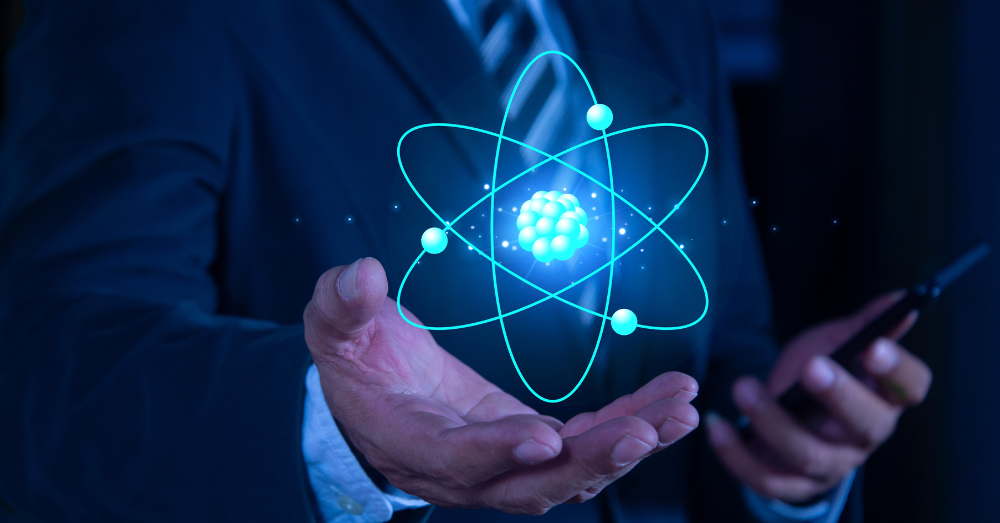The increased demand for AI technology and accuracy could require tech giants to become energy experts as well.
Powering an AI facility is becoming more costly and difficult because of the amount of data required to make calculations and accurate decisions. AI is being used for more aspects of our lives, professional and personal, than ever before. We’re coming closer to a world in which computers are relied upon to provide answers to every question and have all of the information necessary. Some people have even found that AI can replace human interaction in some ways, but that’s a discussion for another day.
Why is nuclear energy being revived as a possibility?
Producing electricity using nuclear technology is the most efficient and effective way to produce large amounts of usable electricity. Unfortunately, the volatility of nuclear processes, along with the radiation and waste created, has led to many energy companies ditching nuclear solutions long ago. It might be time to revive this tech, especially with the drain expected as new technology continues to grow and develop in every industry. AI is being used in more ways than most people could ever expect, but that use is expected to continue to grow, and the data centers housing the information needed require massive amounts of power.
More than Japan
If AI is to continue its growth and development, data centers are necessary. The number of data centers in America that should be operational by 2030 could require as much energy as the entire country of Japan needs today. That’s a massive amount of electrical energy, and the current electric grid isn’t built to handle it. Currently, blackouts and brownouts are relatively common during hot summer days, and some cities are asked to avoid using electricity during peak hours unless necessary to avoid overloading the grid. Unfortunately, the current electric grid isn’t built to store electricity for future use, but is made to supply electricity on an as-needed basis.
EVs could help, but also hinder
In addition to the need for more electricity to power AI data centers, more electricity is required to power electric vehicles. Despite slowing sales recently, EVs are expected to become a larger part of the automotive market over the next several years. This means more power is required for these vehicles. In addition to charging batteries, which takes electricity, some automakers have worked with energy companies to create reverse programs to draw electricity from EVs that are plugged in. This could mean savings for EV owners and added support for the power grid.
The grid hasn’t kept up
The electricity needs of the average home have only increased over the past several decades. Before cell phones, the internet, laptop computers, and many added electric kitchen appliances, most homes didn’t require a great deal of electricity to operate. Count the number of TVs in your home; look at how many lights are on in rooms you’re not using; check out how long you have to charge your phone. Most homes draw a lot of electricity compared to 20, 30, or 40 years ago, but AI data centers will draw much more, and a dynamic solution is required.
Nuclear solutions
Nuclear energy is cleaner and more efficient than most current forms of producing electricity. Because they are more efficient and can produce large amounts of electricity, big tech companies have begun to invest in nuclear solutions to the electricity problem. Without more energy, AI evolution will halt and be stuck in its current form instead of becoming the solution to nearly every issue facing the human race.
Should tech companies move forward?
Sometimes it’s important to take a step back and ask the right questions. Should AI advance further? Is it important to have artificial intelligence or should real intelligence continue to be the rule of law? Does it make sense to operate and expand into nuclear energy solutions considering the inherent dangers if a reactor melts down?
While we don’t have the answers to all of these questions, it’s important that tech companies learn from the past and find ways to avoid nuclear meltdowns. The potential release of radioactivity can be harmful to the environment and everything around the reactor site. Many people would point to Three Mile Island as an example of what could happen and the importance of an immediate plan to shut down the reactor when required.
Microsoft and Constellation are using Three Mile Island
Three Mile Island Unit 1 closed in 2019 due to a lack of continued funding, but now, Constellation and Microsoft intend to restart the reactor in 2027. It is being renamed to Crane Energy Center and is expected to add as much as 800 megawatts of energy to the grid. This could power more than 800,000 homes, making it extremely efficient. That said, most experts warn against becoming reliant upon nuclear energy for electrical energy needs.
The goal of this new process is to power AI data centers, but also to add power back to the grid to help avoid issues during peak times when more energy is consumed. Constellation is also partnering with Meta to keep the Clinton Clean Energy Center operating for another two decades.



